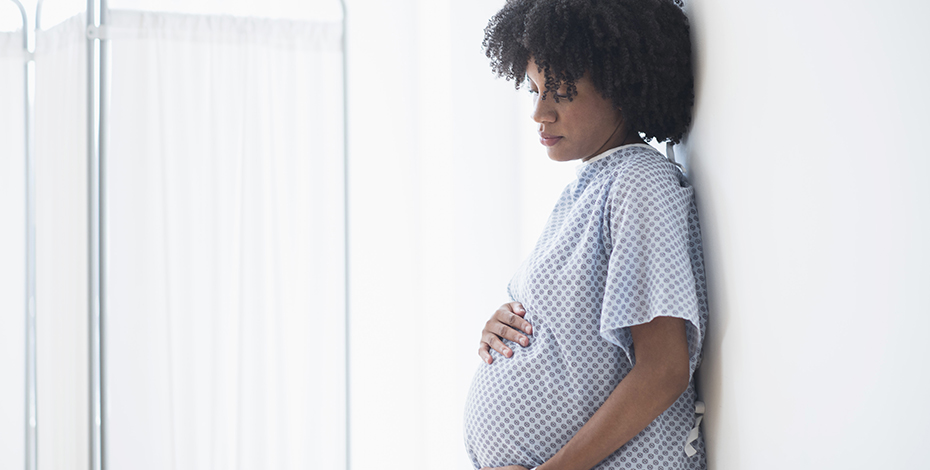
Birth doesn’t have to be traumatic

ADVOCACY It’s been a taboo topic for far too long but the time is right to address physical birth trauma, argues the APA’s Policy and Government Relations team.
Increasing access to pelvic health physiotherapy in the antenatal and postnatal periods is a strong focus for the APA and it is encouraging that there appears to be a growing awareness of its importance in the community and among decision-makers.
Physical birth trauma—the physical injury and mental harm resulting from traumatic childbirth—has for too long been a taboo topic in society, often dismissed as a normal part of childbirth to be endured rather than prevented and treated.
Despite research suggesting that 45.5 per cent of women and other birthing people experience physically and mentally traumatic birthing events, until recently their experiences have rarely been canvassed in mainstream media or in public health discourse.
A lack of education and support has traditionally limited informed decision-making, resulting in feelings of losing control and powerlessness that contribute to the trauma experienced.
Physical birth trauma—the injuries sustained during childbirth or conditions that develop following childbirth—is shocking and distressing.
It may include severe perineal tears, urinary and faecal incontinence, and pelvic organ prolapse.
Left untreated, these injuries and the resulting pain can have a direct, long- term and debilitating impact on many facets of birthing people’s daily living, mental health, partners, families and communities.
These include the ability to exercise, have sexual intercourse, socialise, return to work, do household chores and lift and play with children as well as self-confidence and clothing choices.
There has often been a stigma associated with these injuries and an attitude focused on the wellbeing of the baby.
How many times have we heard ‘You’ll forget all about the birth as soon as you hold the baby in your arms’ or ‘As long as the baby is safe and well’?
Too many birthing people experiencing post- birth pain and injury report being made to feel that they need to suffer in silence.
It’s shocking that this remains the situation in 2023 when the evidence is clear that physical birth trauma is, in many cases, preventable.
Evidence-based health interventions delivered by qualified pelvic health physiotherapists can alleviate and reduce physical birth trauma.
Physiotherapists play a critical role in preventing, diagnosing and treating perineal trauma in the antenatal and postnatal periods.
It is possible to reduce the risk of physical birth trauma and even prevent some third- and fourth-degree perineal tears and stress urinary incontinence with the right preparation during pregnancy.
Suitably trained pelvic health physiotherapists assist during all stages of pregnancy, identifying risk and diagnosing conditions via internal examination and ultrasound, delivering pelvic floor muscle training, assisting in preparing for childbirth and informed decision-making, promoting recovery and prescribing appropriate exercises during pregnancy and at birth.
It has been shown that postnatal physical interventions ensure better health outcomes for women and other birthing people.
The APA’s aim is for the clear evidence already present in research and clinical guidelines to flow through to Medicare Benefits Schedule funding available across the country.
As the Association builds its policy case to advocate for publicly funded access to prenatal and postnatal pelvic health physiotherapy, guided by National Advisory Council chair and pelvic health physiotherapist Catherine Willis APAM, we are pleased that others are championing the profession.
This was the case during the recent New South Wales Legislative Council Inquiry into Birth Trauma.
In addition to a comprehensive submission by the APA, the inquiry heard evidence from other advocates.
A range of people, including those with lived experience and spokespeople from the Australasian Birth Trauma Association and the Australian Medical Association NSW, spoke about the importance of pelvic health physiotherapy early intervention and ongoing care.
One woman said, ‘I was in a position to be able to pay for my own physiotherapy so that I didn’t suffer the consequences and didn’t suffer from prolapse and all those things that women do end up suffering from because they can’t get that care.
‘However, there continues to be minimal funding to ensure access to physiotherapy throughout pregnancy and beyond.’
The Australasian Birth Trauma Association, led by CEO Amy Dawes, who spoke of her own life-altering experience of birth trauma, called for the New South Wales Government to explore state or federally funded options to ensure routine access to pelvic health physiotherapy, including prenatal and postnatal assessment and support.
In its submission, the Australian Medical Association NSW recognised the importance of evidence-based, collaborative care, writing, ‘A very successful example of collaboration is that of medical professionals and physiotherapists.
‘Physiotherapy is the main form of treatment for women experiencing physical symptoms postpartum (Dawes et al 2022).
‘Supporting a collaborative model of care from the beginning of pregnancy, could provide significant safeguards to prevent birth impacts including trauma (Dawes et al 2022).’
The APA is developing a position statement and advocacy strategy focused on partnering with these and other powerful advocates to increase our lobbying efforts.
© Copyright 2024 by Australian Physiotherapy Association. All rights reserved.





